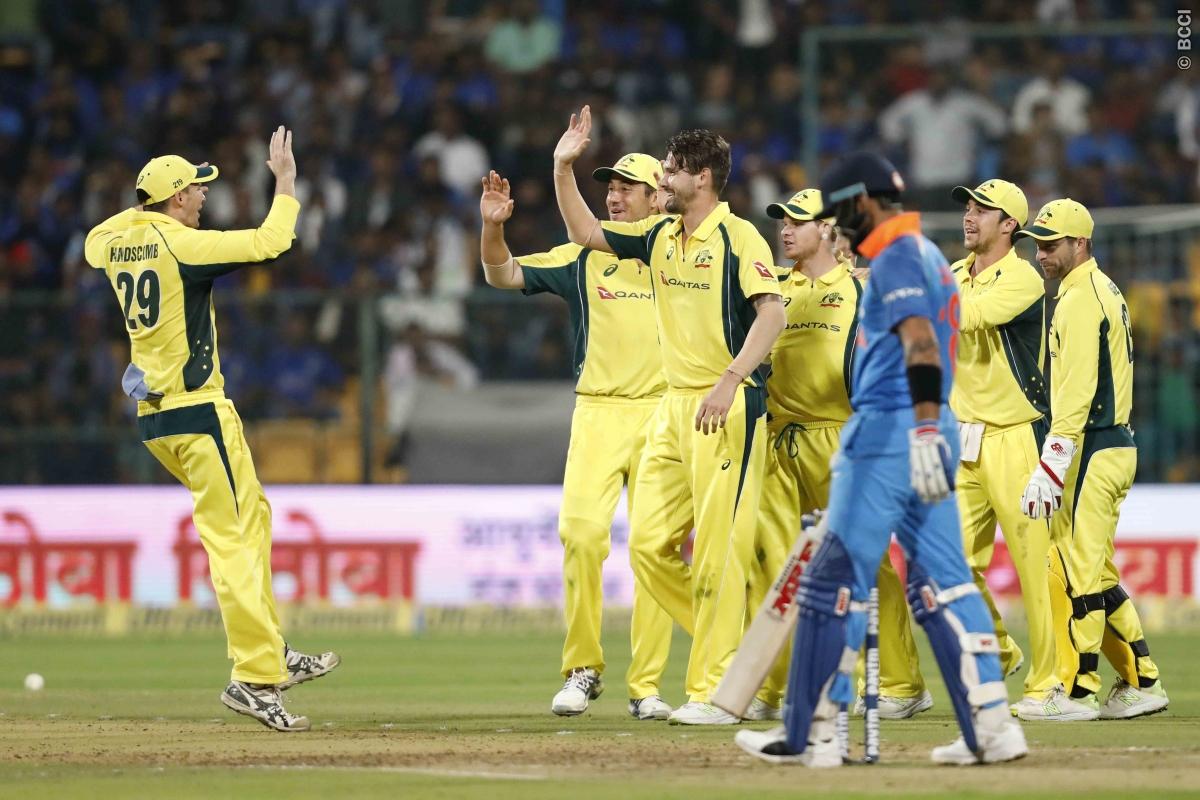India vs Australia | Takeaways: Australian middle-order’s soul-searching and Ravindra Jadeja’s fluctuating “intent”
Even a Virat Kohli century couldn’t take India past the Aussie total, resulting in the series coming to an interesting point where Ravi Shastri would say all three results are possible. However, Australians not finding a way out in the middle-overs would be a huge concern for the visitors.

Can Australia find a way out of the debris?
Justin Langer knows a thing or two about pumping his wards. During his time as the coach of Western Australia and Perth Scorchers, his man-management was one of the primary reasons why the teams from WA had so much success to boast. In 2018, as a member of the West Coast Eagles footy, an AFL club in Australia, he gave a pep talk to the team which echoed in the players’ ears in such a way that it ended up West Coast winning the title. Not even getting into elite honesty, it is the thing that he failed to inculcate into the Australian side.
After the visitors got up a great start by scoring 193 runs for the opening wicket between Usman Khawaja and Aaron Finch, they failed to accelerate the gear and despite a short cameo by Glenn Maxwell, they ended up scoring only 313 runs in 50 overs. They have a good enough pace bowling unit which can be as effective as any in the world on their day, but their batting is failing to pick up the debris at the right time. The spin strangulation worked against their plans and their failure to play any good pace bowlers resulted in India winning the middle-over exchange.
The problem is not with the way Australia are operating their batsmen in the middle-over, but it has something to do with the fact that they are not finding a way to tackle once a wicket falls. With the wicket being a road in the first few overs, it was only apparent that once the effect of heat goes down, it would start turning and the cracks would come into play. Instead of trying to play out the only spinner gamely, they seemed clueless to end up with a score which, despite the result, was not a safe one.
It was supposed to be a cricket match, not an athletic meet, JSCA
Playing cricket in India during early summer is an interesting proposition. The ball comes to the bat nicely and with the cracks opening and dew coming into effect, it becomes interesting towards the end in an ODI run-chase. However, taking a
In Hyderabad, the ball moved with a pace that would make Usain Bolt proud. The lack of moisture added to it as most of the balls had literally become
When the surface becomes so fast, a fielder knows that he wouldn’t be able to get close to the ball. The less fast - not a slow one for sure - ensures an even field and the small joys like saving a couple of runs for the team, or the fielder stretching himself for a couple of yards adds meaning to the game. Could Mohali and Delhi take a clue from it?
Where was the intent, Jadeja?
One of the joys of watching Ravindra Jadeja on a cricket field is that even on the bad days, he never shied away from taking the challenge head-on. His quest to prove himself and taking the high-ground has been insatiable and there is a genuine leap of joy whenever he does manage to get what he always wanted. Since returning to the limited-overs set-up during India’s Asia Cup campaign last year, it is very hard to find a moment where the Saurashtra boy hasn’t given his all.

 © Getty
© GettyThe ability to run faster than usual to save the boundaries, the intent to throw to effect that odd run-out or
When Jadeja came out to bat, just after the dismissal of Virat Kohli, India were 219/6 in 37.3 overs, needing 95 runs off 75 balls. With Vijay Shankar at the other end, Jadeja could have played the second fiddle perfectly in order to take the bounce off his shoulders. However, instead of playing gamely, he rocked back and found

Comments
Sign up or log in to your account to leave comments and reactions
0 Comments